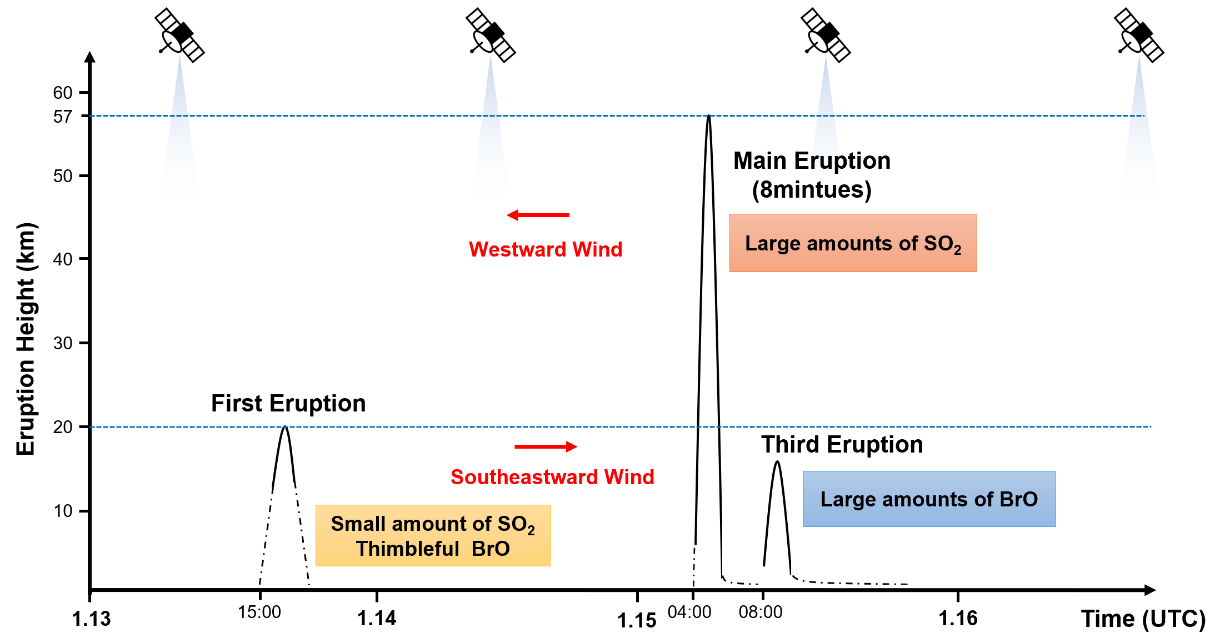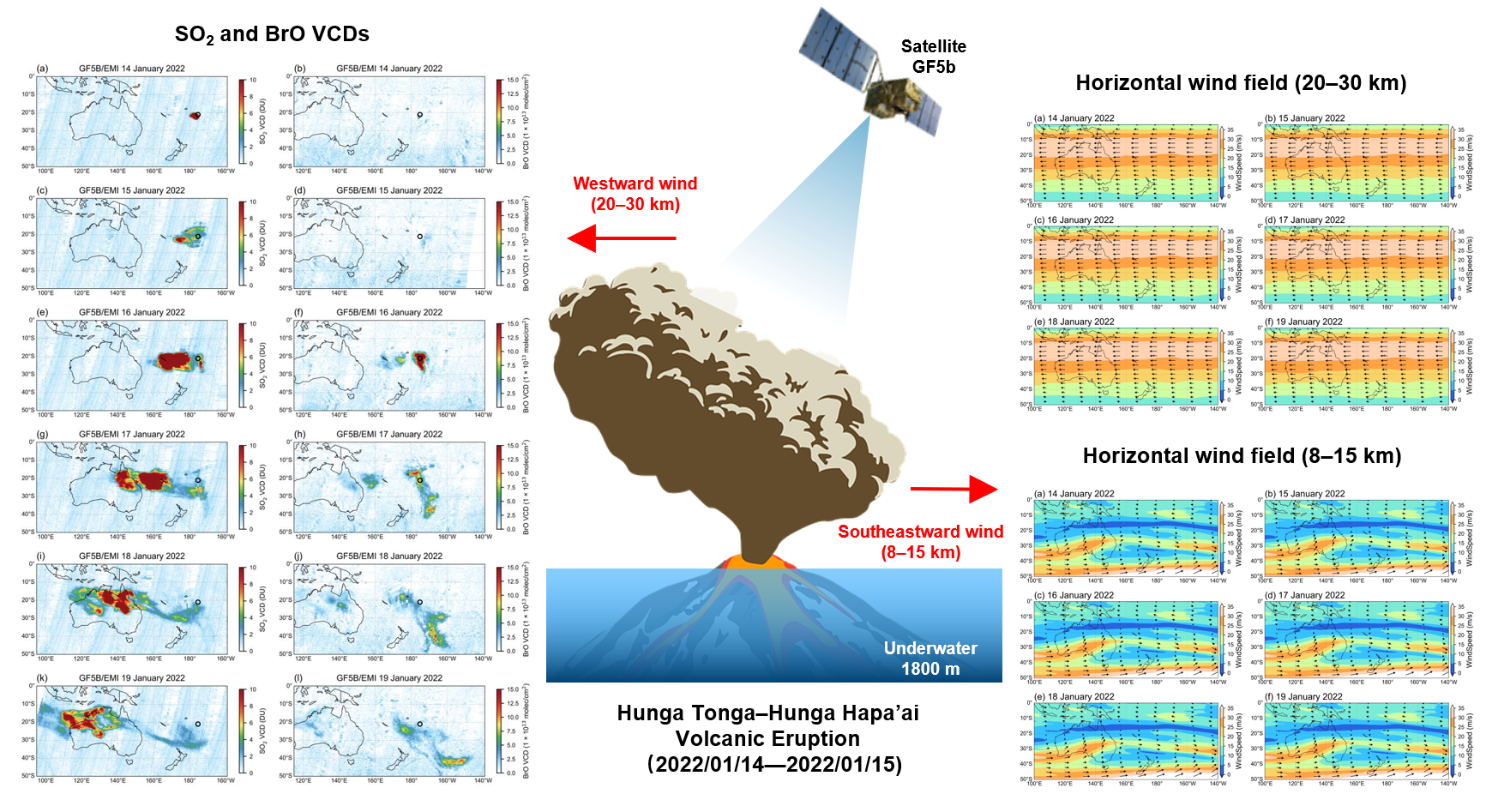
Recently, a research group at Hefei Institutes of Physical Science (HFIPS) of the Chinese Academy of Sciences (CAS) analyzed the distribution characteristics of sulfur dioxide (SO2) and bromine monoxide (BrO) from the Hunga Tonga–Hunga Ha'apai (HTHH) eruption, using the observation data from EMI-02, a self-developed satellite-based atmospheric trace gas differential absorption spectrometer.
The results were published in Remote Sensing.
SO2 and BrO in volcanic eruption plumes are important gas components that affect the global environment and climate, destroying stratospheric and tropospheric ozone and forming sulphate aerosols, which can lead to acid rain and global cooling.
In this study, the team members found that the two gas components spread west and southeast respectively, and that the HTHH eruption emitted significantly less SO2 compared to the 1991 Pinatubo eruption, despite reaching an altitude of 57 km.
To explain these two unusual phenomena, the team reviewed the literature on submarine volcanoes. They found that SO2 from submarine volcanic eruptions could be removed by wet deposition and the release of BrO from volcanic magma melt occurred later than SO2.
Combined the horizontal and vertical wind field data with satellite observations on the time axis, the team concluded that HTHH volcano experienced three different intensities of eruptions. The differences in eruption height and time had led to transport of SO2 and BrO in different directions in the southern hemisphere.
"Our research would provid important support for the research of the effects of volcanic eruptions and magma degassing processes," said LUO Yuhan, member of the team.
This study was funded by the National Natural Science Foundation of China and the Youth Innovation Promotion Association of the Chinese Academy of Sciences.

Diagram of the three volcanic eruptions (Image by LUO Yuhan)

The distribution of SO2 and BrO from the HTHH submarine volcano (Image by LUO Yuhan)